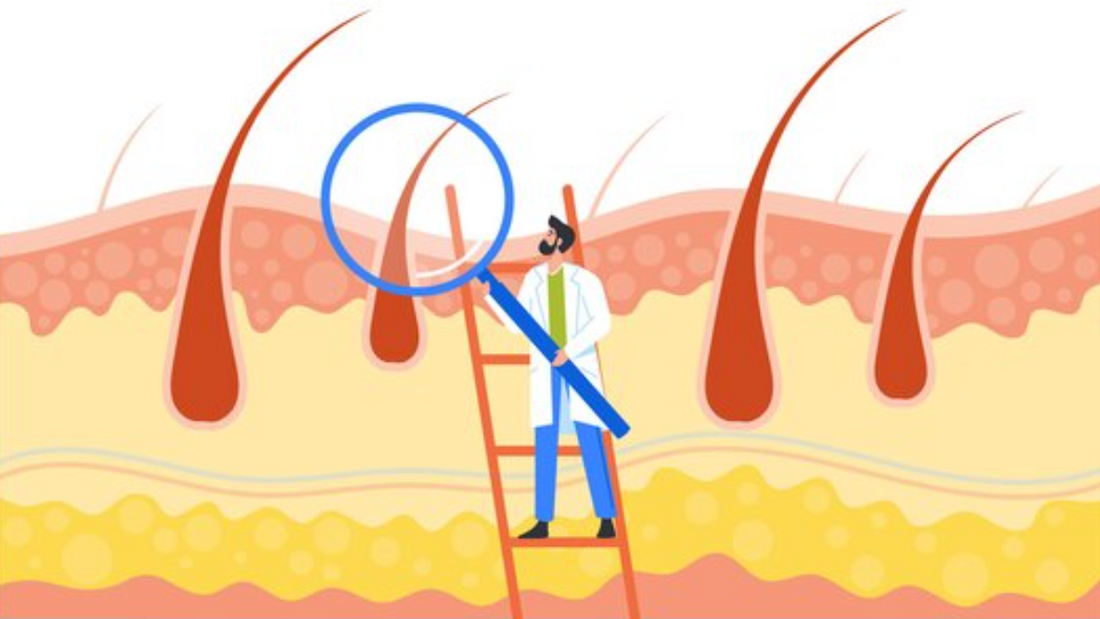
Skin Anatomy
Lit ZitThe skin is the largest organ of the human body and plays a vital role in maintaining overall health and well-being. Its importance stems from its numerous functions:
Protection:
The skin acts as a physical barrier, protecting the body from environmental factors such as pathogens, harmful UV rays, pollutants, and physical injuries.
Regulation:
Skin helps regulate body temperature through sweating and blood flow control. It also prevents dehydration by minimizing water loss.
Sensation:
It contains nerve endings that allow us to sense touch, pressure, temperature, and pain, making it a critical organ for interaction with our surroundings.
Immunity:
The skin is the first line of defense in the immune system, with cells that detect and combat pathogens.
Vitamin D Synthesis:
Exposure to sunlight triggers the skin to produce vitamin D, essential for bone health, immune function, and more.
Aesthetic and Social Role:
Skin health and appearance often influence self-esteem and social interactions.
Structure of Skin:

1. Epidermis
The epidermis is the outermost layer of the skin, providing a waterproof barrier and serving as the first line of defense against external factors.
Structure:It is made up of several sub-layers:
- Shields against environmental hazards like UV radiation and pathogens.
- Prevents water loss and maintains hydration.
2. Dermis
The dermis lies beneath the epidermis and is thicker, contributing to skin elasticity, strength, and thermoregulation.
Structure:
- Papillary Dermis: Contains capillaries and sensory nerve endings for touch perception.
- Reticular Dermis: Rich in collagen and elastin fibers, housing sweat glands, sebaceous glands, and hair follicles.
Function:
- Supports the epidermis with nutrients and oxygen.
- Regulates body temperature through blood vessels and sweat glands.
- Provides sensory input via specialized nerve endings.
3. Hypodermis (Subcutaneous Layer)
This is the innermost layer, composed mainly of fat and connective tissue.
Structure:
- A matrix of fat cells and collagen.
- Blood vessels and larger nerves are embedded here.
Function:
- Insulates the body and conserves heat.
- Acts as a cushion to absorb shocks and protect underlying muscles and bones.
Additional Features
Sensory Perception:
The skin is equipped with receptors like:
- Meissner’s Corpuscles: For light touch.
- Pacinian Corpuscles: For deep pressure and vibration.
- Nociceptors: For detecting pain.
Skin Pigmentation:
- Melanocytes in the epidermis produce melanin, protecting the skin from UV damage and contributing to its color.
Glands:
- Sebaceous Glands: Secrete sebum for moisturizing.
- Sweat Glands: Aid in thermoregulation.
Thermoregulation:
- Blood vessel dilation and constriction in the dermis regulate heat loss and retention.
- Sweat production helps cool the body during overheating.
Healing:
The skin regenerates through rapid cell turnover in the basal layer of the epidermis, promoting healing from minor injuries.
What does the epidermis (top layer of skin) do?
Your epidermis is the top layer of the skin that you can see and touch. Keratin, a protein inside skin cells, makes up the skin cells and, along with other proteins, sticks together to form this layer. The epidermis:
- Acts as a protective barrier: The epidermis keeps bacteria and germs from entering your body and bloodstream and causing infections. It also protects against rain, sun and other elements.
- Makes new skin: The epidermis continually makes new skin cells. These new cells replace the approximately 40,000 old skin cells that your body sheds every day. You have new skin every 30 days.
- Protects your body: Langerhans cells in the epidermis are part of the body’s immune system. They help fight off germs and infections.
- Provides skin color: The epidermis contains melanin, the pigment that gives skin its color. The amount of melanin you have determines the color of your skin, hair and eyes. People who make more melanin have darker skin and may tan more quickly.
What does the dermis (middle layer of skin) do?
The dermis makes up 90% of skin’s thickness. This middle layer of skin:
- Has collagen and elastin: Collagen is a protein that makes skin cells strong and resilient. Another protein found in the dermis, elastin, keeps skin flexible. It also helps stretched skin regain its shape.
- Grows hair: The roots of hair follicles attach to the dermis.
- Keeps you in touch: Nerves in the dermis tell you when something is too hot to touch, itchy or super soft. These nerve receptors also help you feel pain.
- Makes oil: Oil glands in the dermis help keep the skin soft and smooth. Oil also prevents your skin from absorbing too much water when you swim or get caught in a rainstorm.
- Produces sweat: Sweat glands in the dermis release sweat through skin pores. Sweat helps regulate your body temperature.
- Supplies blood: Blood vessels in the dermis provide nutrients to the epidermis, keeping the skin layers healthy.
What does the hypodermis (bottom layer of skin) do?
The bottom layer of skin, or hypodermis, is the fatty layer. The hypodermis:
- Cushions muscles and bones: Fat in the hypodermis protects muscles and bones from injuries when you fall or are in an accident.
- Has connective tissue: This tissue connects layers of skin to muscles and bones.
- Helps the nerves and blood vessels: Nerves and blood vessels in the dermis (middle layer) get larger in the hypodermis. These nerves and blood vessels branch out to connect the hypodermis to the rest of the body.
- Regulates body temperature: Fat in the hypodermis keeps you from getting too cold or hot.
What else makes up the skin?
One inch of your skin has approximately 19 million skin cells and 60,000 melanocytes (cells that make melanin or skin pigment). It also contains 1,000 nerve endings and 20 blood vessels.



